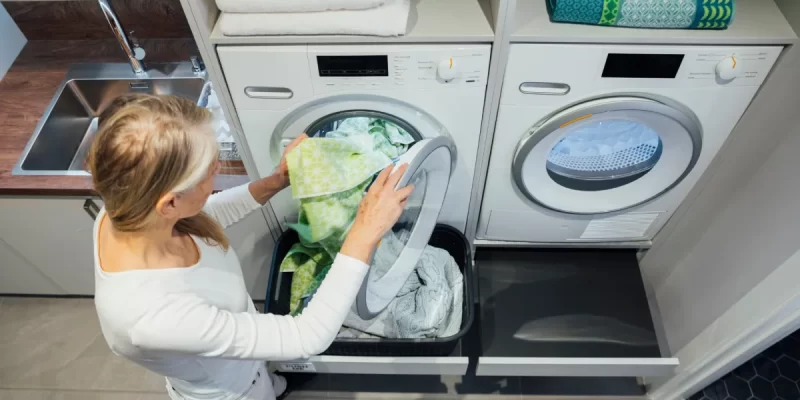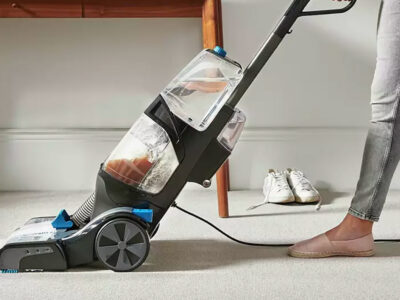Separate the whites from the coloreds, load the clothes into the washer, add detergent, fabric conditioner, and bleach (if using) to their designated slots, and press “Start.”
If that’s the extent of your laundry knowledge, congratulations. At least you separate your whites from your coloreds.
If you find washing clothes to be a chore but are very particular about how clean your clothes must be, here’s a tip for you. Use a professional laundry cleaning service, and you can forget all about the above steps and anything else that comes after.
With the right laundry service provider, you won’t even have to fold and iron your clothes or match socks. You just need to put away your clean, neatly folded, and correctly sorted clothes in your closet.
Still, read on.
These game-changing laundry tips are for those moments when you need to do your laundry yourself.
Separate the whites from the coloreds.
Send your clothes over to the laundry shop if you’re not doing even this because it’s too much hassle. This is a basic rule, and your clothes will thank you for following it.
Technically, though, separating clothes into just two piles of whites and coloreds is not enough. You need to create at least three piles: whites, light coloreds, and dark coloreds.
If you want, you can go one step further. Separate your clothes into four piles:
- whites
- light-colored, medium-colored, and pastels
- dark-colored
- bright-colored
The dark-colored clothes include blacks, dark blues, dark browns, and dark greens. Bright-colored clothes usually include bright reds and oranges.
Each pile makes one load.
Check for colorfastness.
As an additional precaution, get a damp white cloth if you have a new piece of colored clothing and are washing it for the first time. You can add a bit of your detergent to it, too, to replicate what would happen in the wash.
Next, rub the damp, soapy white cloth onto the colored clothing’s hem, interior seam, or anywhere a faded color will not be too noticeable. If some of the color rubs off on the white cloth, then your new clothing is not colorfast, and its color will bleed onto the other clothes in the wash.
One other test you can do is dissolve some detergent in a basin of water, then leave your new piece of colored clothing in the soapy water for a few minutes. If the color bleeds onto the water, the garment is not colorfast and can dye other clothing.
Remove non-colorfast garments from their respective piles. You may wash those by hand, or you may wash them in the machine with similarly colored clothes. For instance, you can wash denim blue jeans that fade with other denim blue jeans.
Separate lightly soiled from heavily soiled garments.
Now go through each color pile. Separate muddy jeans, greasy coveralls, shirts splattered with paints and sauces, and other heavily soiled clothing.
You don’t want to wash heavily soiled clothes with lightly soiled garments. The former will contaminate the latter, leading to a yellow or grey cast to white clothing or duller colors on coloreds.
You can wash heavily soiled clothes together, but only if they are colorfast and do not belong to highly different color families. If your washing machine has a program for heavily soiled clothes, you can wash them using that program.
Sort your laundry according to fabric type.
If you want to give your clothes extra care, you will go through each pile of clothing again and sort each one according to fabric type.
You might not want to be too precise at this point. You can simply separate light from heavy garments. Your delicate and fine fabric clothing, such as your silk blouses, silk scarves, handkerchiefs, and undergarments, can go in one pile, while towels and pants can go in another. Heavy sheets can again go on a different stack.
The delicate garments, you can wash using a gentle cycle. The heavier garments, you can wash in a regular cycle. The thick and heavy sheets can also go in a normal cycle.
If you don’t want to sort clothes according to the type of fabric, you can use a mesh wash bag, also known as a mesh laundry bag or lingerie bag, to separate the delicates from the heavier garments. These mesh bags will protect them from abrasion and undue twisting and knotting.
Nevertheless, it is best not to wash silks, acetates, and other delicate fabrics with heavy clothing if you want to extend their service life.
One other thing you should check at this stage is fiber shedding. Clothes naturally shed fibers. However, if some of your clothes seem to be shedding more than their fair share and are leading to lint-heavy washes, don’t wash them with other garments.
Wash them separately; better yet, wash them by hand.
Pretreat stains.
If one of your clothes is stained, say with blood, chocolate, ketchup, or grease, pretreat it before washing it in a machine.
Pretreating means trying to get as much of the stain out before you wash it in the washing machine. You may use a cleaning agent and a soft brush to pretreat stains.
The right cleaning agent will vary depending on the stain.
For grease or oil stains, you can use dishwashing liquid. For blood, you can use liquid detergent. You can also use a stain remover followed by a liquid detergent for most stains; just follow the directions on the label.
Turn clothes inside out.
Before loading the clothes into the machine, turn them inside out. There are a few reasons you want them going into the wash inside out.
First, if they become abraded in the wash, the abrasion will occur in the interior. Thus, any damage will not be visible when you wear it.
Second, if a different colored garment rubs its color off on it, the damage will not be too obvious because it is inside, where others can’t see it.
Third, when washing jeans, you prevent their seams from turning white when you wash them inside out.
Get Better at Washing Your Clothes
Follow a few basic rules when you’re doing the laundry.
Specifically, separate the whites from the coloreds, test for colorfastness, remove heavily soiled clothing, sort according to fabric weight, pretreat stains, and turn clothes inside out.
However, if you can’t or won’t do your laundry, your best bet is to use a professional laundry service. Use a service that will treat your clothes better than even you can simply because they have more laundry subject-matter knowledge and experience.
If you can, use a service that provides extras.
In the United Arab Emirates, there’s a laundry service that partners with plastic recycling companies in Dubai and Abu Dhabi. They do free pick up of recyclables with their customers’ laundry.
AUTHOR BIO
Rami Shaar is co-founder and CEO of Washmen, a top-notch online dry cleaning and laundry service in Dubai and Abu Dhabi. Rami has a bachelors in Commerce from Concordia University and has filled BD, product, operations, and IR roles throughout his career. He has worked at Morgan Stanley, Swicorp and Uber before co-founding Washmen.










Comments